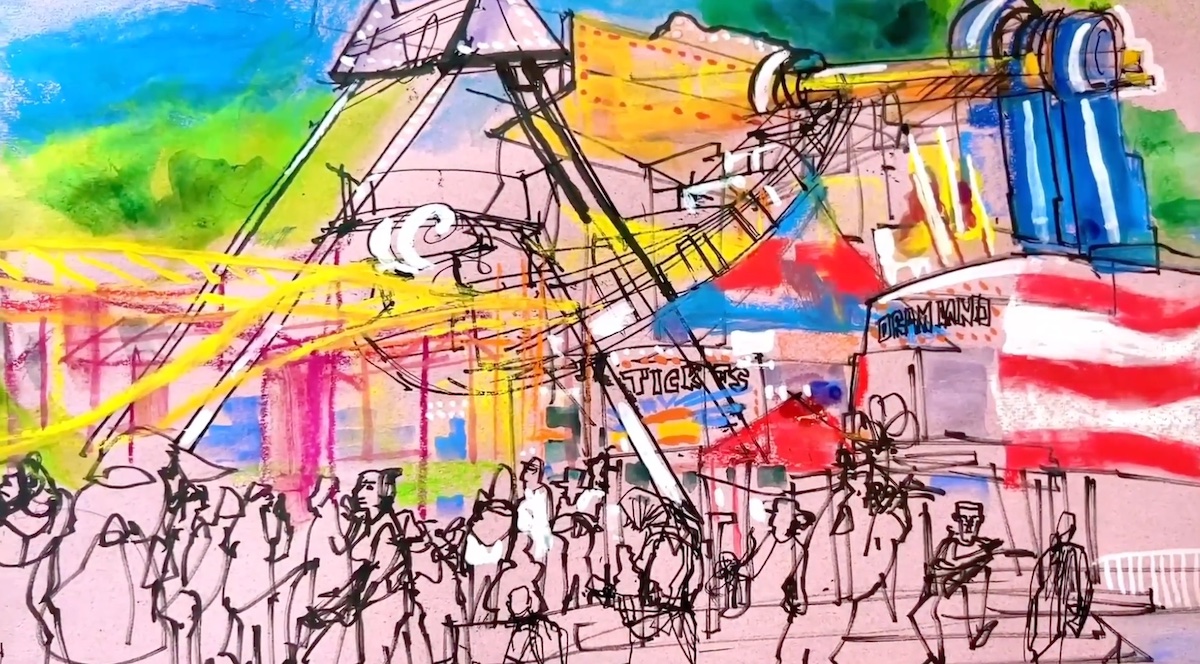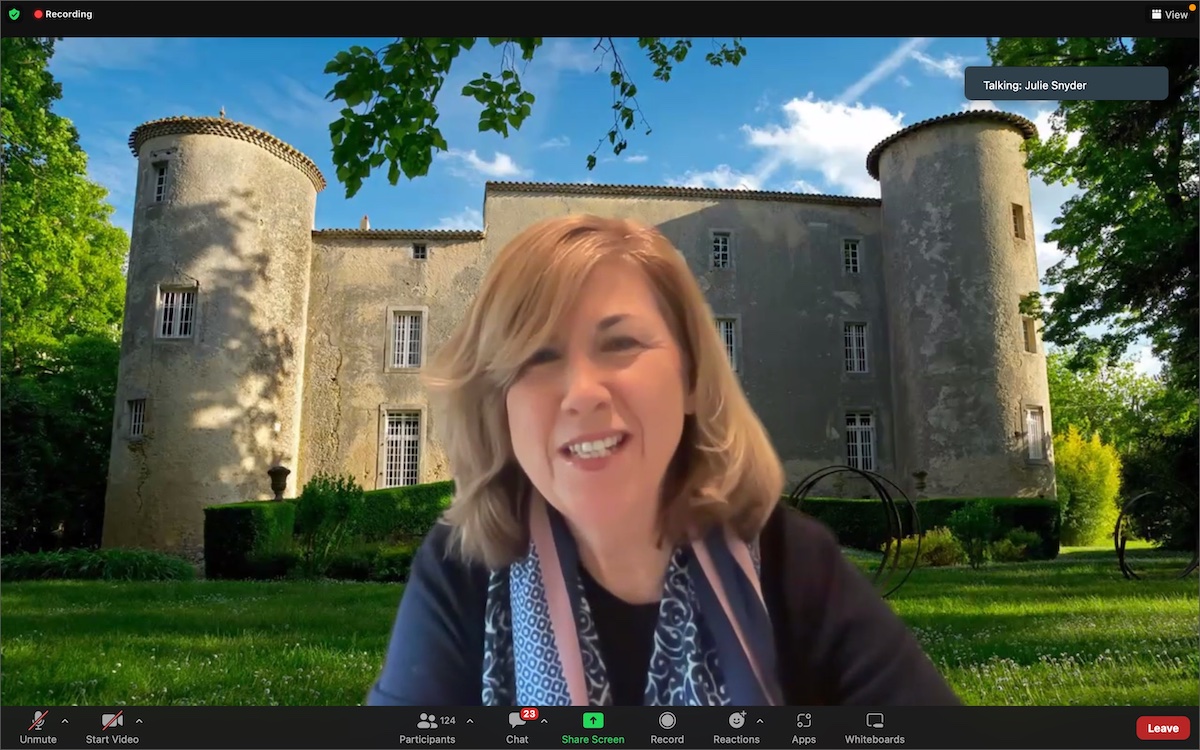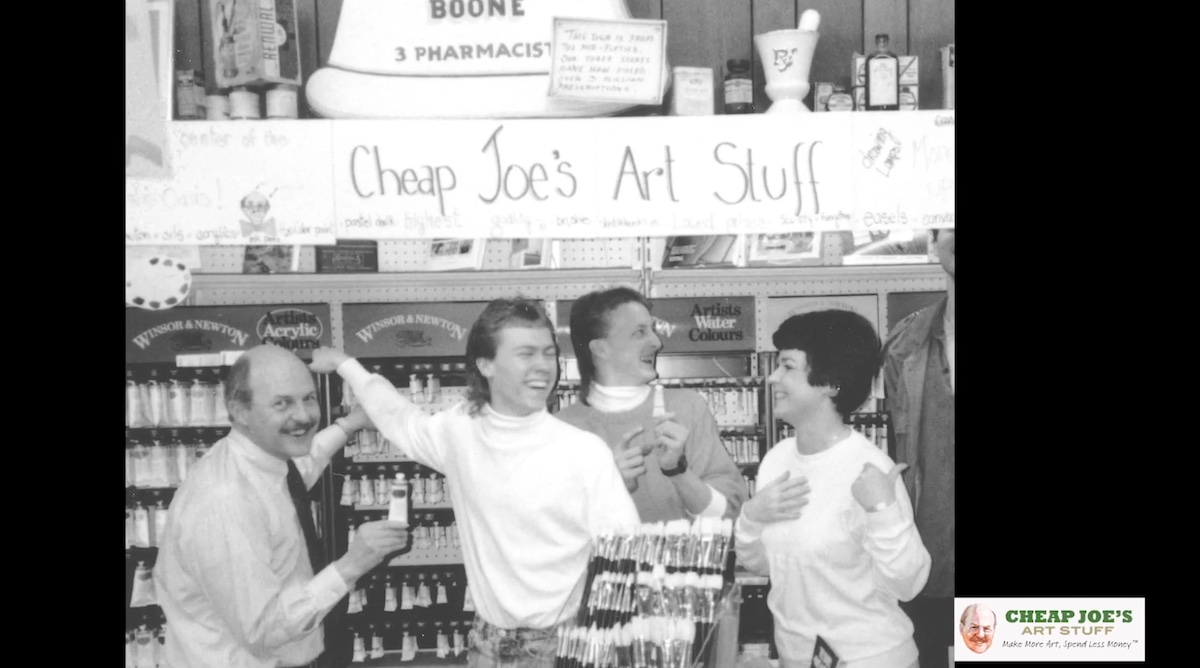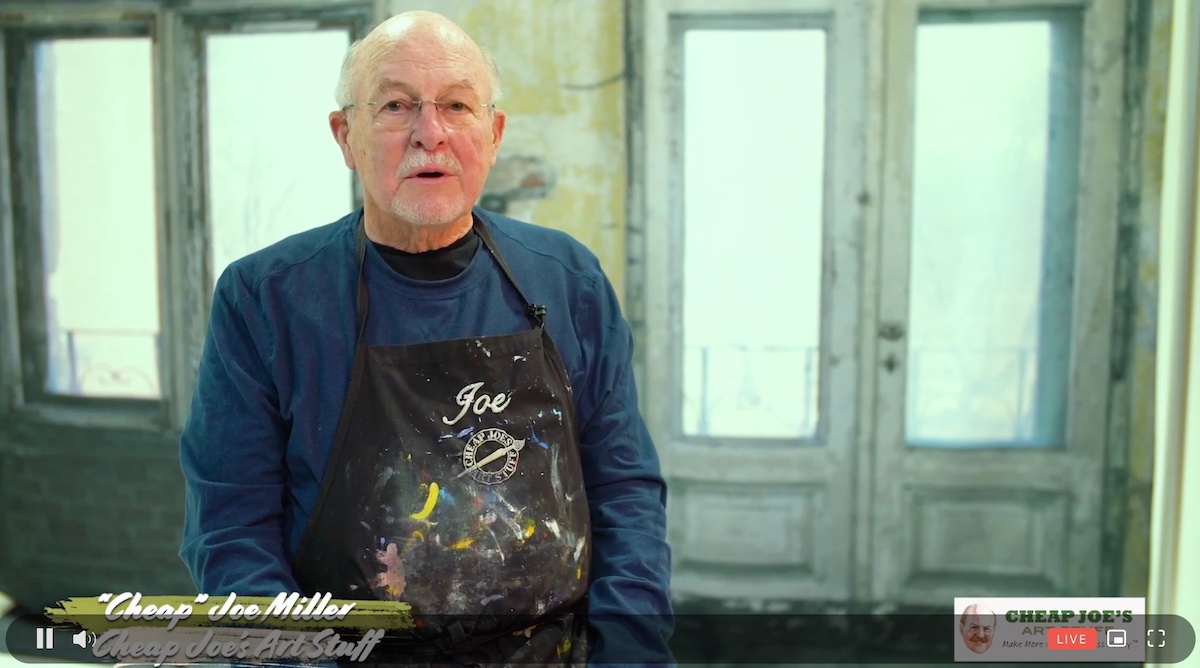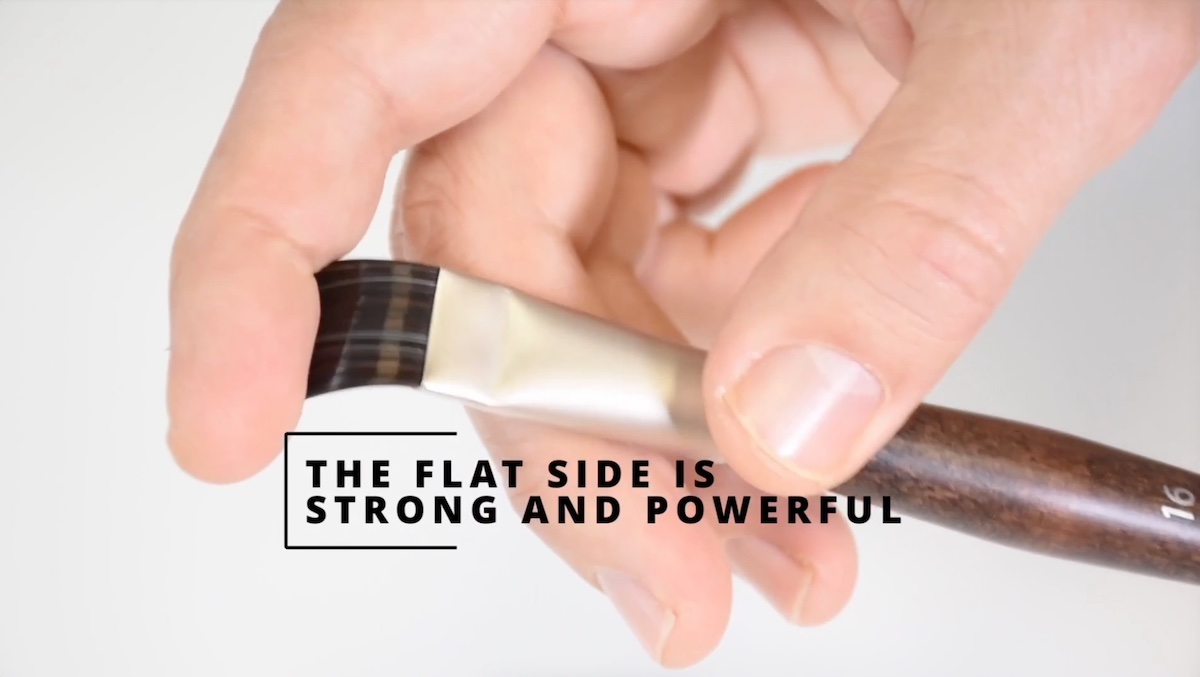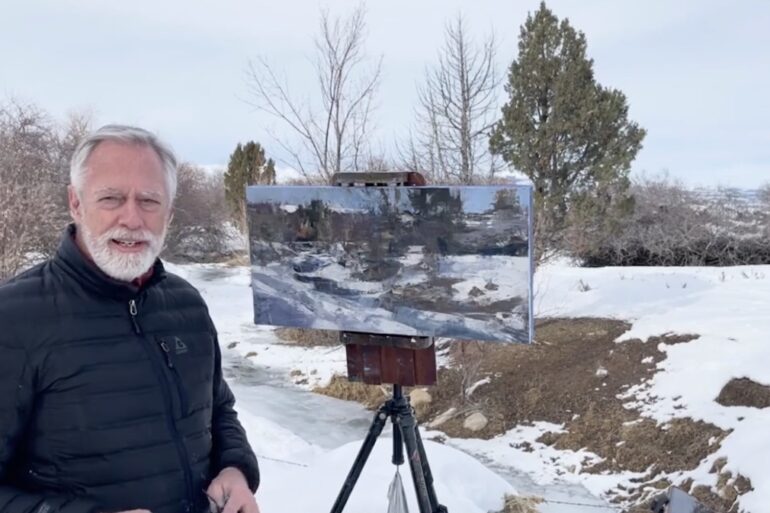
This post is also available in:

The last day of conventions always represents an ambivalent moment for attendees who, while excited about reviewing the demonstration sessions, so that they can put the information they have received into practice, are also aroused by sadness because the last day closes the circle of this remarkable new artistic adventure.
A problem this obviated by Streamline Publishing, which has organized periodic conventions aimed not only at different artistic mediums but also at styles: realism and plein air painting.
The upcoming scheduled events, presented during the convention days, are many: the first in chronological order is PACE, Plein Air Convention and Expo, the “Woodstock” of plein air painting, which will take place in Denver, CO, May 21-25, 2023 and will feature iconic figures such as: Mark Shasha, Daniel Sprick and Albert Hanseel, to name a few. PACE guests this year will include actress Jane Seymour.
Next will be Pastel Live, which will be online Aug. 17-19, 2023, and Realism Live from Nov. 9-11, 2023.
All that remains for you, the audience, is to type in the following link and register: https://streamlinepublishing.com/art/
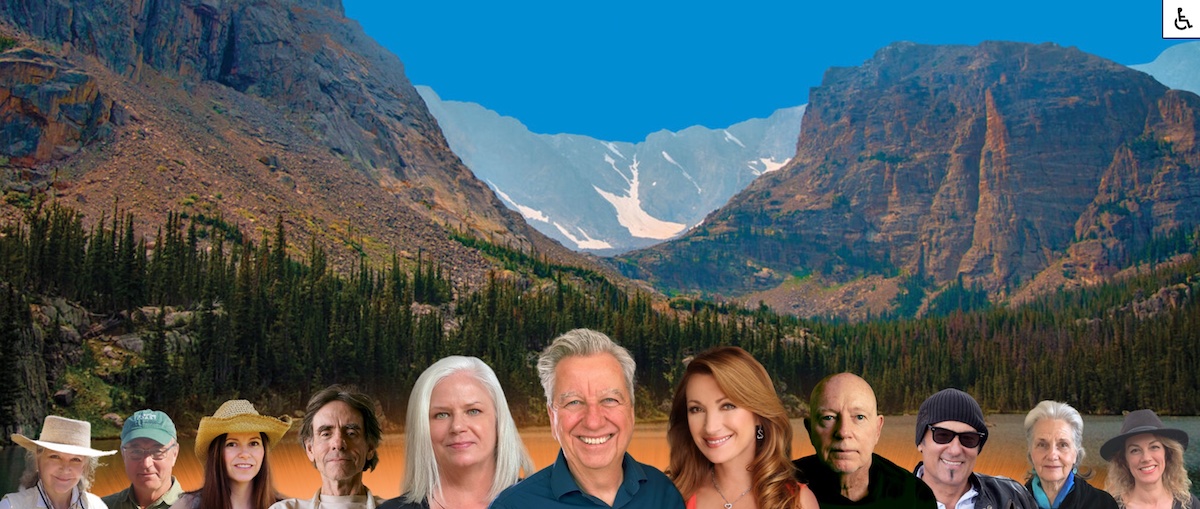
Opening the dances on the third and final day of the fourth edition of Plein Air Live was Carl Bretzke: a medical surgeon who gave up his profession in 2016 to devote himself to painting full time. Being ranked, in 2021, first in the Plein Air Saloon competition only fortified his life choice.
Passionate about moonlit landscapes, he created for the demonstration session a night session with which he depicted a beach in Florida: a landscape not particularly interesting at first glance with which he instead skillfully brought out all the peculiarities of painting at night, starting with the importance of the artificial light with which he visualizes the palette. “It is important that the light is of varying temperature and that it is placed frontally on the easel,” said the artist.
In the compositional process based on the use of a prismatic palette, Bretzke, with some turpentine and purple color, identified the compositional light points (made with two different temperature shades of yellow and blue, with which he made the green) and then proceeded to block in shapes starting with the darkest areas into which he gradually and with skillful color transitions, inserted the night blue. Bretzke used King Blue, which he considers a good color for lightening cold colors with an effective color transaction that can highlight both the differences in “darkness of night” and the sense of perspective depth.
Bretzke’s style, as well as his choice of subject matter, is very reminiscent of Van Gogh’s painting, not least because of the concentricity of the brushstrokes. The artist ends the session by affixing details in the shadows, refreshing the darks, and deriving reflections on the bodywork that he achieves by scratching the canvas with the bottom of the brush.
“When the tonal values are in place, there is no reason to worry about the success of the work,” said the artist, who manages to capture the scenery in a realistic and impressionistic manner at the same time while working accurately in the telling of his story.
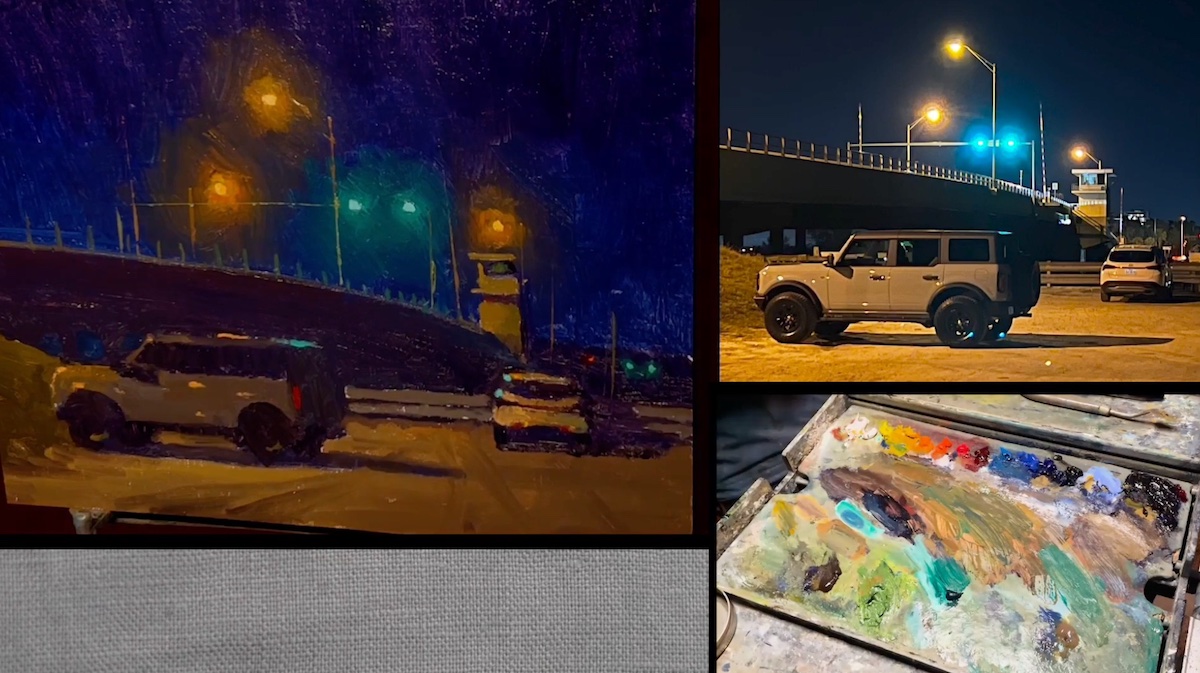
Artist Carla Bosch, originally from South Africa, has created in acrylic a sunset scene taken from a prairie located between Georgetown and Liberty Hill. Her fresh and innovative way of developing the composition, with brushstrokes reminiscent of both Impressionist and Expressionist styles, was certainly influenced by her background in the design environment.
In creating the drawing, from which she began with a warm underpainting made with white and Mars Orange spread in a thin layer, she constructed an outline drawing that also took into account perspective in relation to sunlight projections.
To define the drawing she used vine charcoal, a useful tool because it was easily removed if compositional errors were made. Using a not particularly diluted color she later made the block in shapes starting with the darkest areas and then going into different brushstrokes: flat, short and varied in the darkest areas; long and more homogeneous in the lighter areas of the composition.
Her degree of confidence in representing the scene allowed her to use important color contrasts with which she emphasized the volume of the elements.
During the demo, the artist showed that she plays a lot with color because what matters to her is not finding the color corresponding to the real thing, but rather creating impressions that can communicate directly with the viewer.
According to Bosch, what matters most in plein-air painting is: “having a confidential approach and proceeding without fear because any mistakes can be corrected at any moment of the compositional process.”
The end result was a surprisingly varied palette of the interpreted scene in which her unmistakable style emerges.
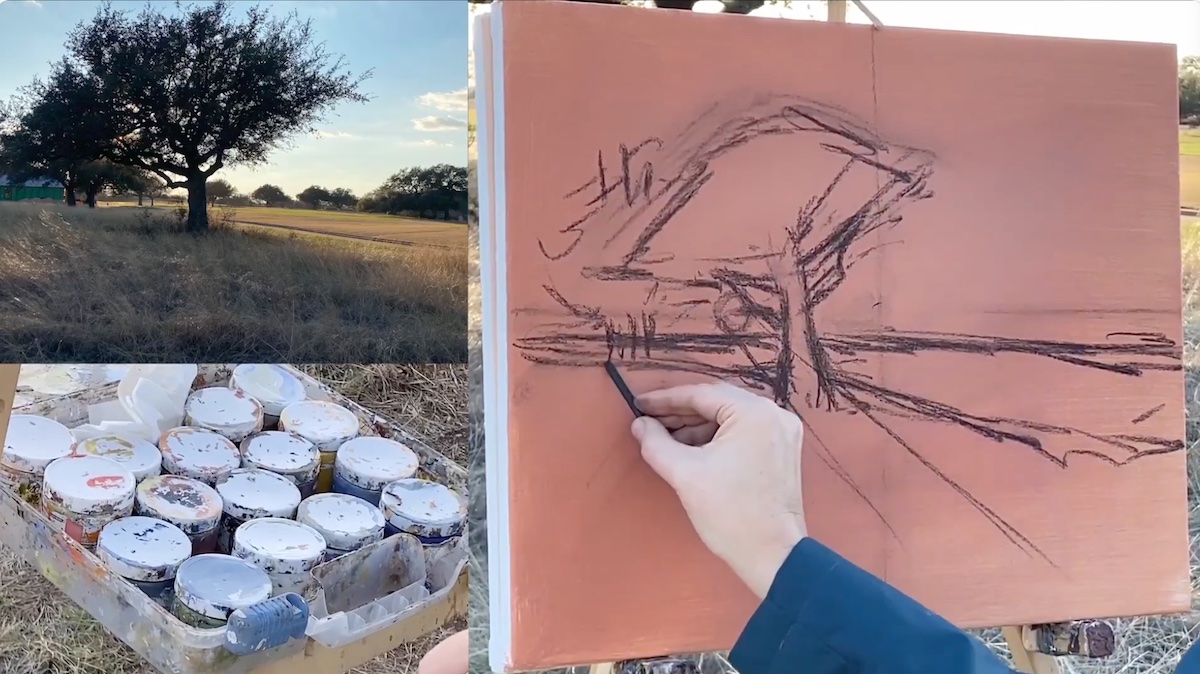
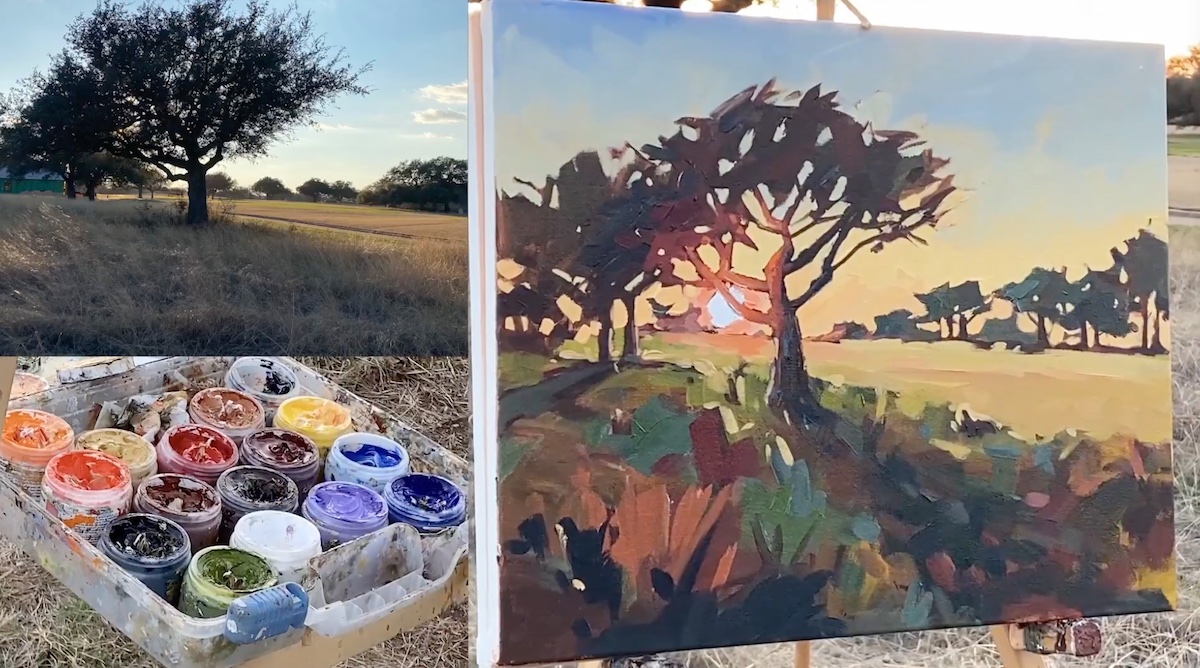
The afternoon session gave way to the critique session, created for the occasion by artist Kathryn Stats. In addition to being an esteemed artist, Stats is also a valued teacher and mentor, and for the critique session she purposely chose works of different levels in order to highlight common issues. A task that was easier in the presence of the reference image that the artists, who made the selected works, sent to the teacher. Having an eye on the initial scene made it much easier for Stats to highlight the strengths and weaknesses of the final compositions submitted for critique. Stats emphasized that the critique session should be considered in all respects a part of the compositional process, and therefore invited the participants to submit their works to more experienced eyes, capable of recognizing in the immediate composition, what works and what does not.
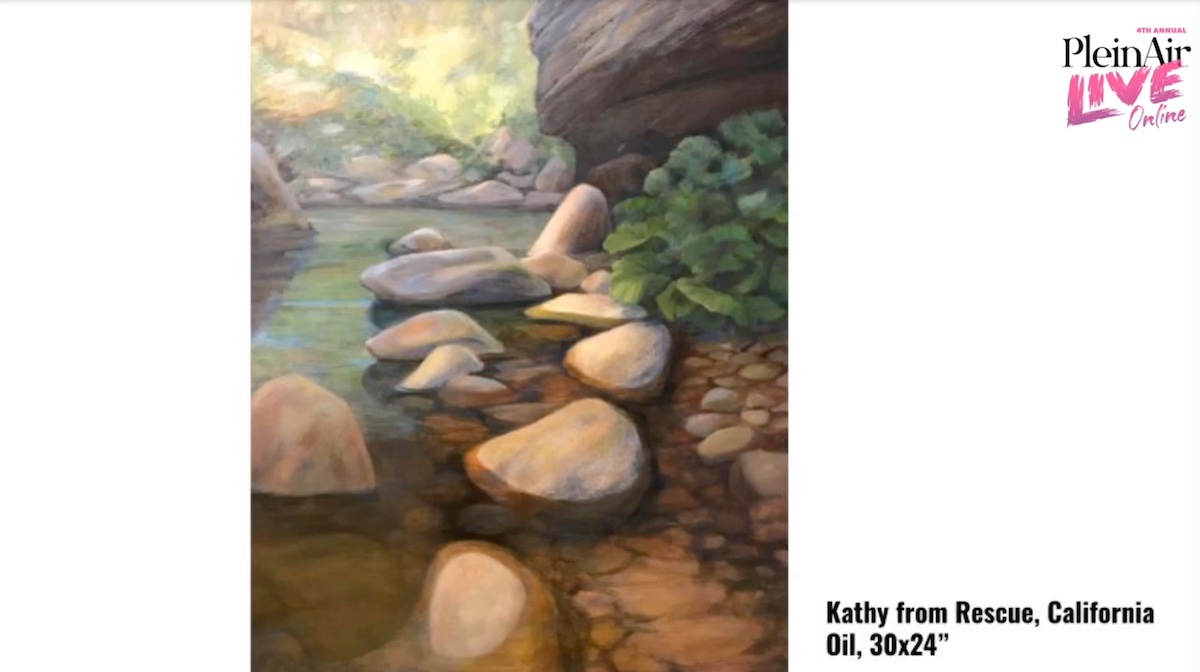
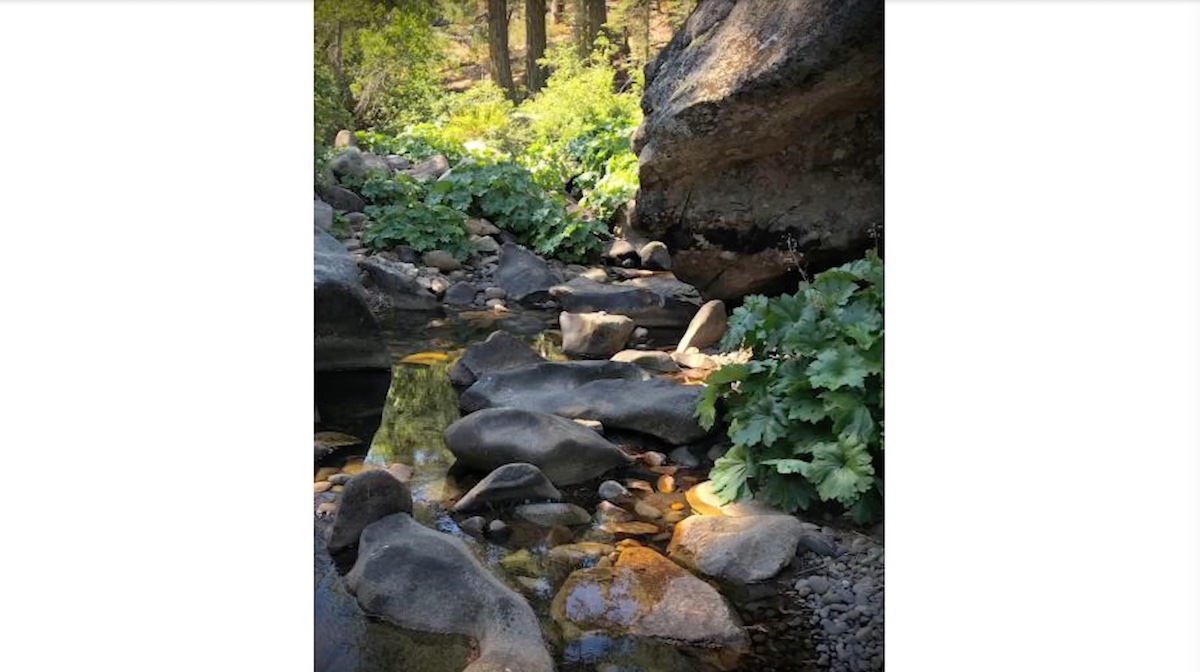
Artist Kathleen Hudson, who will soon become a mom again will be among the featured artists in PACE 2023. For the session she depicted a rock wall of the Garden of the Gods in Colorado Springs CO: an enchanting place that will be among the favorites of PACE 2023.
In the demonstration session she showed how starting from compositional studies made in plein air, she later made compositional variations indoors in her studio where she made compositional and stylistic choices that, however, never disregard reference to studies made outdoors. The key word in her compositional process is “variety”: “continually varying the elements of the composition in fact helps to create atmosphere and movement, extrapolating all the drama of the scene,” said the artist.
Hudson’s compositional process is the same both in plein air and in the studio and is based on warm underpainting done with neutral red. She then laid out large shapes that she diversified only later with color variations and purposeful brushstrokes capable of creating the movement of the scene. Hudson usually spends a lot of time in the creation of the color palette, which she makes in advance by comparing the colors with those of the studies made outdoors, of which she has, however, increased the color saturation. “I use the same colors outside and inside the studio, this helps me in terms of consistency and this way I know what to choose because sometimes the ambient light of the outdoor sky can change the way I perceive colors,” said the artist who repeatedly stressed the importance of hand pressure in applying brushstrokes. “On the pressure of the hand depends the strength of your mark,” said Hudson.
The final work is an over-the-top cross-section of a scene in which the imperious charm of the Colorado sky -insolently beautiful- is poetically rendered by creating a strong contrast with the jagged rocks she created as if they were a sculpture.
Finally, to those who asked her advice on how to optimize, in plein air painting, the desire to create the best possible painting in a limited amount of time, the artist replied, ” Especially for plein air events, the time management part is definitely the biggest challenge. I try to make sure I pick a painting size I can finish within the time I can allot to a piece,” said the artist.
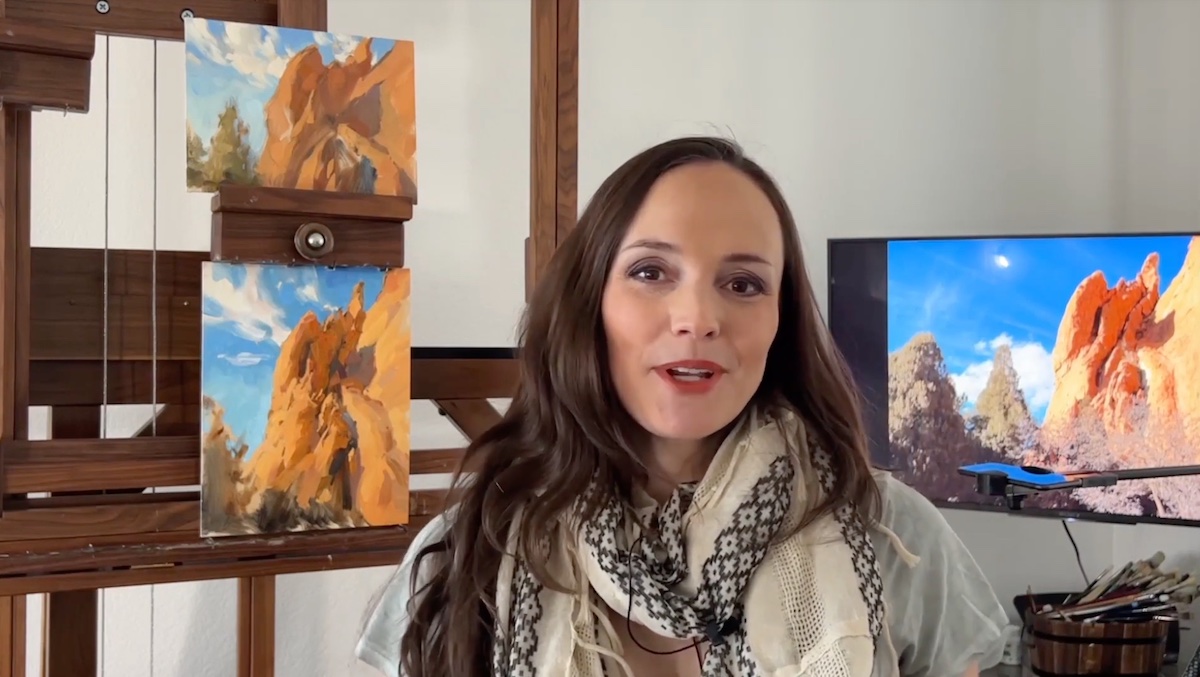
The last artist of the day was Douglas Fryer: a surprise to all attendees because of the totally different and abstract approach with which he worked on an old panel painted years earlier. “Some of my favorite paintings were done on top of old abandoned work,” said Fryer, who added,” I find that most of the time the best works succeed from the mistakes or totally unexpected choices the artist makes.” In addition to creating a snowy landscape in Spring City, Utah, the artist dispensed noteworthy tips and advice. A great advocate of painting with alternative tools that he considers more important than the classic brush for this kind of painting, he used a mason’s palette knife most of the time, with which he spread different layers of color. The reason for this choice is due to the fact that the artist considers art to be the result of the organization of elements that are aimed at the purpose of stimulating the senses, emotions and thoughts, both of the artist, who executes the work, and of the eye of the observer who is led through compositional rendering toward the subject of the painting to which everything tends. Defining the compositional subject is crucial for Fryer as he argues that all subsequent choices are aimed at achieving focus on the subject. Another particular element in the demonstration was the use and explanation of why he prefers to use a type of wooden panels that respect a precise rationale based on the figure of the rectangle. A logic evident right from the initial division of the sections on the pre-existing panel and which, in the case of the demonstration session, he realized on a rectangular panel with a ratio of 2:1.
From the initial compositional ratio, the artist, from deep and intense reflections, moved on to the layering of multiple layers of color from which he magically brought out a landscape detailed to the point of leaving the narrative point to the viewer’s impressions.
In addition to being a great artist Fryer is also a deep thinker, and among the various gems dispensed during the demonstration he concluded by saying: “There are beautiful things that happen when you don’t really know the end from the beginning. The research is critical as well as the application of principles along the way, which are great abstract steps that bring the work to life.”
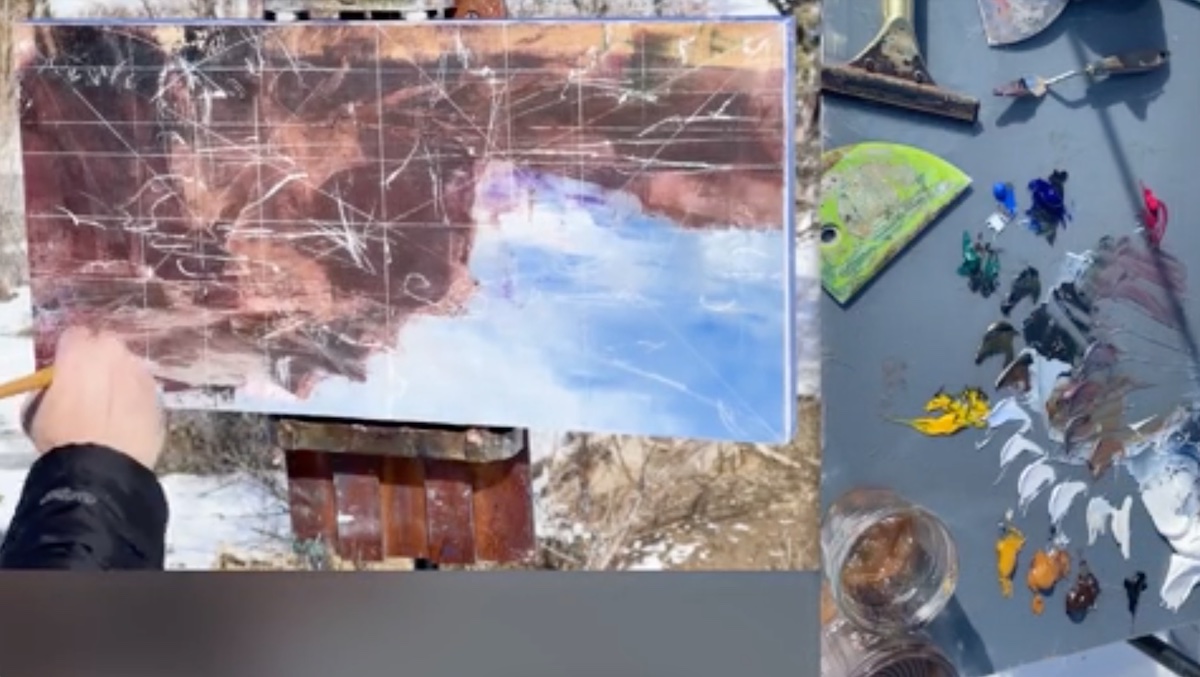
Among the various sponsors of the day LPAPA Laguna Plain Air Painters Association, presented the educational offerings with which, through a large community of artists, it carries on the traditions of impressionistic painting made in Laguna Beach, CA. LPAPA’s focus is particularly on the educational aspect aimed at both children and adolescents for whom it has structured educational projects that allow them to become familiar with both plein air representation and the study of the great figures of the past that have made LPAPA one of the most highly regarded societies devoted to plein air in the American scene. Anyone can join LPAPA and become a member to take advantage of the many benefits the association offers members. You can find all the information by typing on the following link: https://lpapa.org
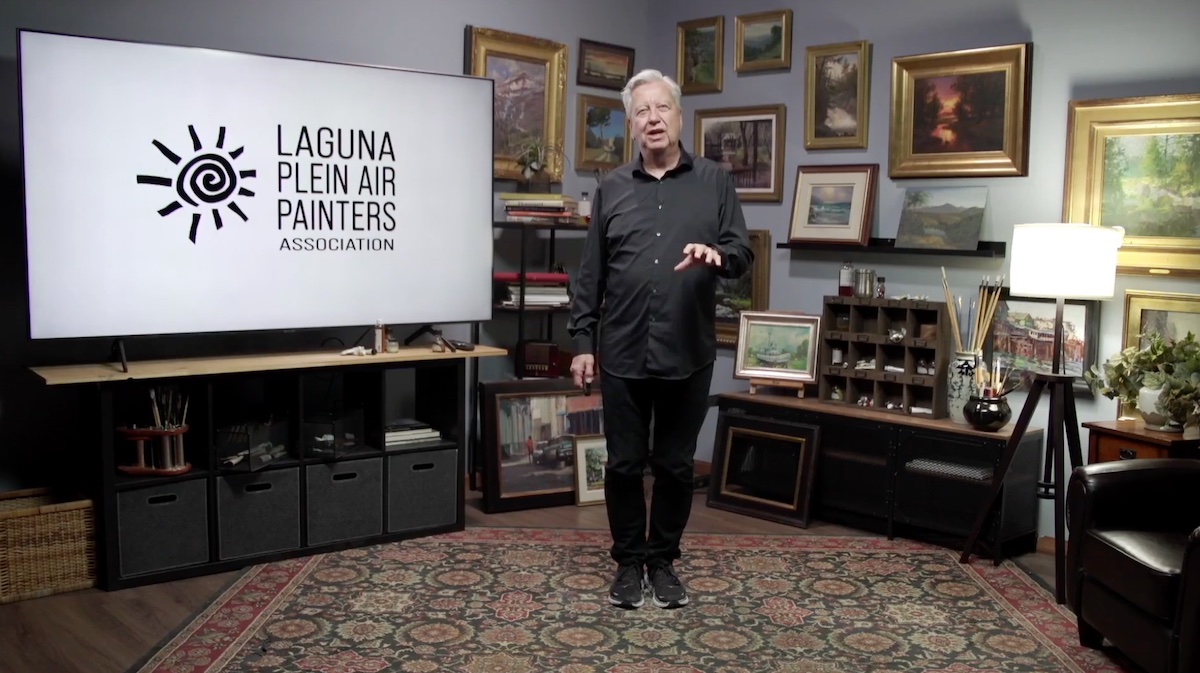
The fourth edition of Plein Air Live has also come to an end amid enthusiasm of the participants and the desire to put into practice the notions acquired. Miami Niche awaits you, with the amazing Streamline Publishing team, in Denver, Colorado for the 10th PACE, Plein Air Convention and Expo.
